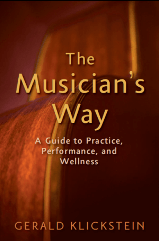
–The Musician’s Way, p. 154
During much of the twentieth century, before the advent of high-tech home entertainment, large numbers of people attended classical and jazz concerts.
Even concerts offering conventional repertoire presented in predictable ways could attract sizable audiences.
Today, the appeal of such old-generation concerts has waned.
Classical and jazz concert attendance is in steady decline, as shown in the chart below. But we can reverse that trend.
Innovative musicians can recapture audiences via what I term “new-generation concerts.”

Declining attendance at classical and jazz concerts, from the 2017 NEA Survey of Public Participation in the Arts. Click for details.
New-Generation Concerts
Before we examine concert design, let’s acknowledge the vast competition for listeners’ attention: music lovers can readily stream high-quality concerts, recordings, films, and more, all at minimal cost.
Therefore, to spur audiences to bear the cost and commit the time to attend performances, new-generation concerts offer experiences that can’t be found online. Ideally, they appeal to audiences on multiple levels (more about that in a minute).
Fundamentally, new-generation concerts are characterized by fresh content, engaging experiences, and wholehearted performances. The best attract new and traditional audiences alike.
Below, I share tips to create new-generation concerts and provide links to other pertinent articles on The Musician’s Way Blog.
“New-generation concerts offer experiences that can’t be found online.”
Craft Fresh Content
Curate musical programs that feature top-quality music compiled under compelling concepts or themes. Whether you present new or traditional repertoire, or both, craft programs that lead audiences on novel musical journeys.
- If you’re a pianist keen to perform the music of Chopin, rather than putting on a concert named “Chopin Recital,” which doesn’t convey anything novel and can easily be replaced online, you might curate a one-of-a-kind program titled “Chopin’s Circle,” in which you illuminate Chopin’s compositional influences along with aspects of influence in the creative process, or perhaps one called “After Chopin,” in which you spotlight features of Chopin’s style and ways in which subsequent composers adapted them. Such curated programs stand out for their uniqueness and showcase a performer’s depth of insight.
Here are some articles on the subject of distinctive programming:
- 3 Traits of Successful Concert Programs
- Let’s Get Relevant
- Programs that Pop
- 6 Steps to Better Program Notes
Design Engaging Experiences
Design experiences that engage audience interest before, during, and after they arrive at a performance site – consider alternative venues, pre-concert activities, social events, cash bars, partnerships with arts organizations, and so forth. Create happenings that people would be sad to miss.
- Building on that Chopin example, an enterprising pianist would send out announcements 2-3 months ahead of the concert describing not only the program concept and the artist’s insights but also illuminating other compelling aspects of the event such as a pre-concert video introduction, in-concert refreshments, the attractiveness of the venue, and/or an after-show party. That’s what I mean by appealing to listeners on multiple levels.
The following articles can help you design irresistible experiences for your audiences:
- Boost Income and Impact with Local Sponsorships
- Design Thinking for Audience Development
- Differentiate or Disappear
- Partnering with Non-Profits
Perform Wholeheartedly
Deliver heartfelt performances that convey insightful musicianship, polished execution, and commanding showmanship. Avoid the detached, low-energy presentation style characteristic of many old-school performers in which the musicians might dress too formally, perform blandly, and never speak to listeners.
These articles cover topics relevant to growing an on-stage style:
- Connecting with Audiences
- 3 Elements of Showmanship
- Speaking from the Stage
- 6 Tips to Improve On-Stage Body Language
- Handling Onstage Malfunctions
Final Thoughts
Famous vs. Aspiring Artists
If you’re wondering why celebrity performers can put on old-style concerts and still attract large audiences, it’s mainly because their fame and long-term engagement with listeners motivates people to attend.
Unknown performers, of course, can’t leverage the power of renown. For aspiring artists, the content of their programs, the concert experiences they offer, and the power of their musicianship – combined with their skill at event production, communication and marketing – are what will compel listeners to hear them, or not.
“Fundamentally, new-generation concerts offer fresh content, engaging experiences, and wholehearted performances.”
Music Schools: Behind the Times
If performer training programs at conservatories and universities focused on professional skills as intently as they focus on musical proficiency, emerging musicians would gain the abovementioned know-how during their schooling.
Unfortunately, most music programs ignore the realities of the music industry, omitting the education that would equip graduates with creative, entrepreneurial, and logistical skills. That is, piano students may learn to play Chopin beautifully but not how to design a
At the same, even though The Master-Apprentice Model Is Dead, young performers continue to choose educational programs based on the fame of a studio teacher, neglecting to research the curricula and outcomes of the educational institutions they apply to.
I hope that young musicians who read this post will not only be inspired to put on new-generation concerts but also make informed choices about the institutions of higher education that they opt to attend.
I’ll be gratified, too, if music school faculty use this article to help spark constructive change at their institutions, and I invite them to consider opportunities for me to offer consulting and workshops at their schools.
Related posts
5 Steps to Better Classical Concerts
The 5 C’s of Concert Planning and Production
Don’t Be a White Egg
The Essence of Stage Presence
Supply and Demand for Classical Musicians
© 2022 Gerald Klickstein
Photo via Pixabay
